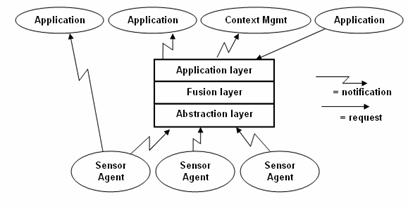Introduction
Location information is the most commonly used context information in context-aware pervasive systems. There are already many approaches to define location information, to track the location of users and devices, to manage such location information, and to utilize location information to support mobile users. As pervasive systems are very complex and can use location information from a variety of sources and for a variety of purposes, gathering and managing location information in pervasive systems is a complex task. There are a variety of issues which need to be addressed in such systems, including:
- types of location information (many sources and kinds of location information),
- location resolution and associated errors,
- resolution of conflicting location information,
- location information access and privacy (who can access location information and how can it be used),
- architectures of location management systems, and
- integration of location information management with general context management in pervasive systems (cooperation of location management systems with the pervasive systems infrastructure) in a way which ensures scalability of the whole system.
Impact
We have built a location management system (Fig.1) which can deal with conflicting location information, is open (able to incorporate new location sensors) and scalable (can scale to increasing numbers of location sensors and users of location information, and to a growing geographical size of the system). The system can support both single applications which usually take location information from one source (e.g. GPS) and complex infrastructures (middleware) for pervasive computing which can gather location information from a variety of physical and virtual location sensors. The solutions in the following areas have high impact on the whole system's scalability: (i) reception of location information from sensors, (ii) interaction with clients, (iii) updates of location information in persistent repositories, and (iv) distribution of location management.

Fig.1 Interactions between sensor agents and clients